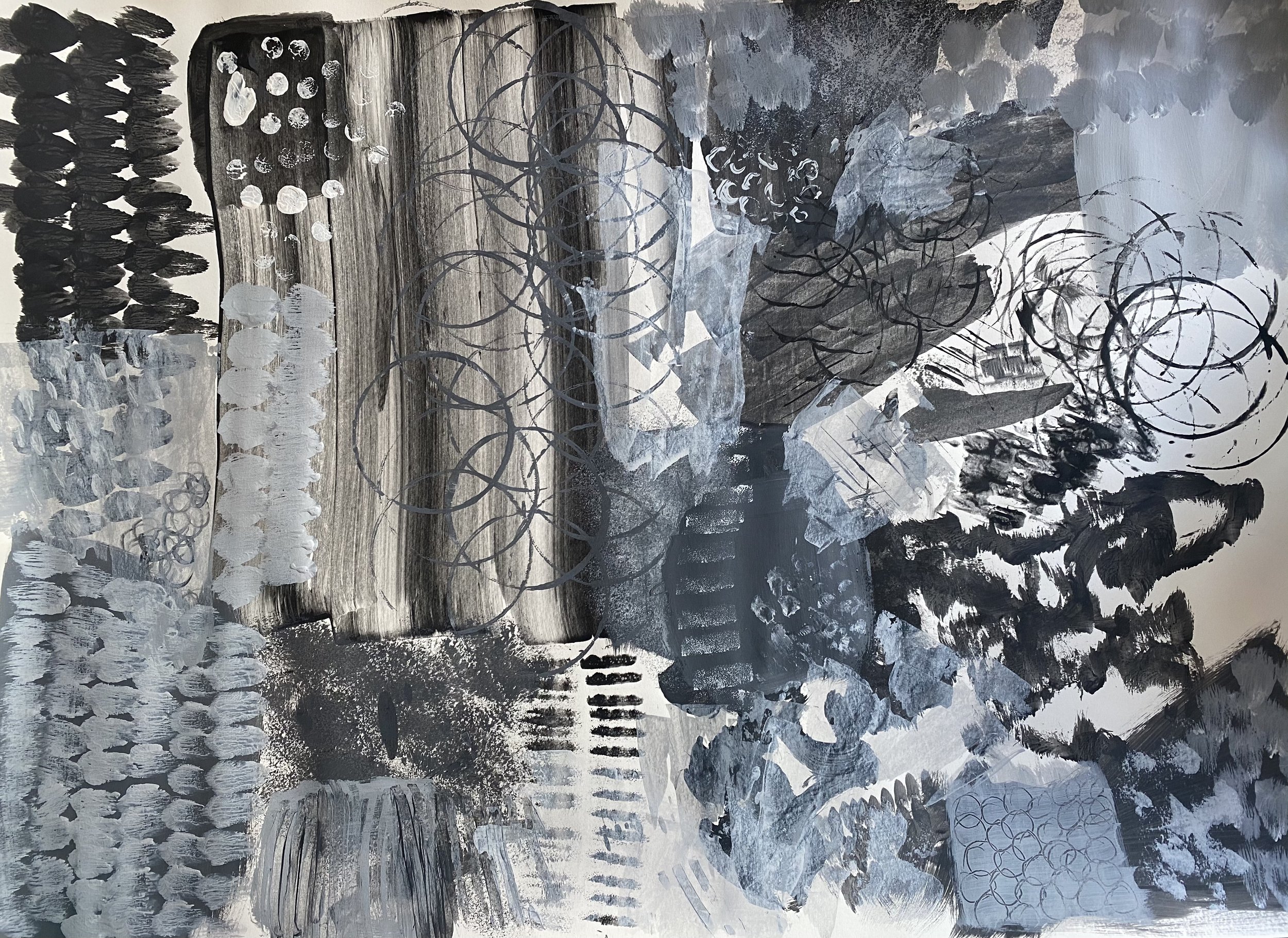Finding my marks
The marks I use
One of the exercises that Gabriella gave us to do on her Experimental still life course involved mark making with different tools. I enjoyed the childlike playfulness of printing, stamping and painting with household items and things that I had collected whilst out walking. I also experimented with asemic writing as a form of mark making. This is a form of open, abstracted handwriting. It is not readable in a traditional sense but it does have visual meaning and a decorative quality. The opportunities for mark making are endless. When I had finished, it was interesting to see how different the marks looked in isolation, once they had been cut up and used for collage.
Monochrome mark making exercise
I carried on my mark making explorations, in my sketchbook, throughout the course, trying out different tools and materials to see what effects I could create. I enjoyed using palette knives to layer and spread paint around. They also make interesting marks when they are used to scratch into the wet paint. Kebab skewers are also useful for scratching into paint or can be used as drawing tools, when dipped in ink.
Future mark making experimentation
The marks that excite me the most at the moment are my pencil and ink drawings. I like the simplicity of a pencil line and the interesting thick and thin qualities of ink drawn lines. I would like to take my drawings further by creating my own drawing tools from found items. I’d love to try drawing with feathers, grasses or pine cones tied to sticks. It is also possible to make ‘pens’ from drinks cans, in the same way, which would be interesting to try. I would like to try making my own inks from natural items like berries or walnut husks. There is a lot left for me to get stuck into exploring!
Layered blind contour drawings using pencil, pen, ink and charcoal
I have also been experiment with translating the qualities of my drawn lines into embroidery using couching. I like the motion of creating different stitched marks. My go to stitches are seed stitch, french knots, long and short stitch, running stitch, stem stitch and couching along with many iterations of the straight stitch. Simple embroidery stitches offer so much scope for experimentation. By using different thicknesses or types of thread the appearance of a stitch differs. Interesting effects can be created by using more than one thread at a time or layering embroidered marks on top of each other. I would like to experiment with layering embroidered marks over screen printed versions of my drawings.
Seed stitches on eco-printed silk and dyed linen with couched outline of leaves inspired by my blind contour drawings.
Printing is another method of making marks on cloth or paper. Screen printing with thermofax screens was one of my favourite techniques from ‘Bringing Colour to Life’. It is possible to transfer a black and white image onto a theromfax screen through a burning process. I can then produce multiple prints from the resulting screen. I am keen to explore the possibilities that screen printing offers for layering and combining images.
Eco-printing also offers the opportunity for making interesting marks, many of which are unplanned. These too can be combined with embroidered marks very successfully. Next, I could experiment with combining my eco prints with simple thermofax screen prints and stitched marks or draw directly onto eco-printed paper with handmade drawing tools and ink.
All of these things offer me opportunities to explore and experiment with mark making and find a language of marks that is my own.


